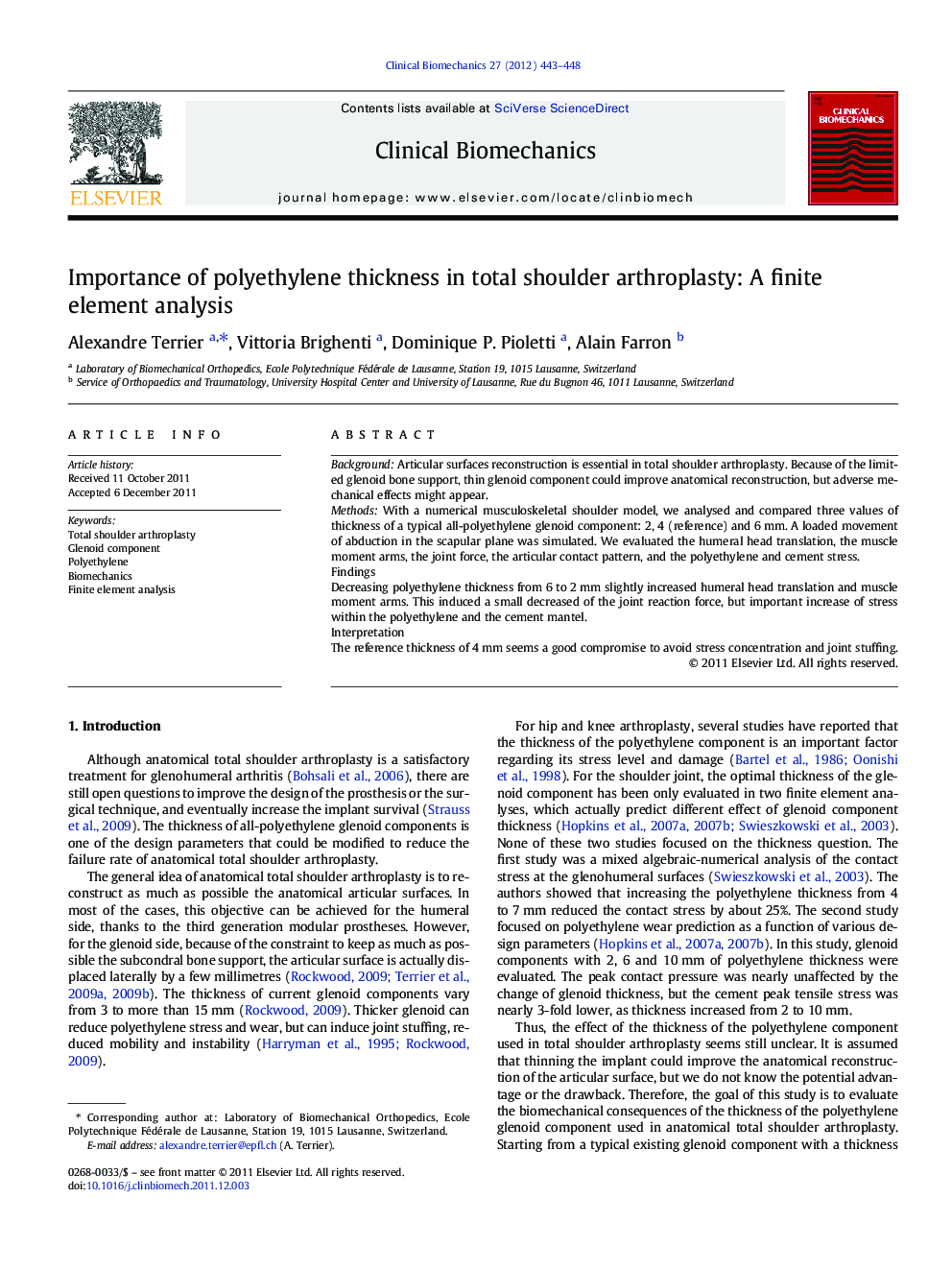| Article ID | Journal | Published Year | Pages | File Type |
|---|---|---|---|---|
| 4050514 | Clinical Biomechanics | 2012 | 6 Pages |
BackgroundArticular surfaces reconstruction is essential in total shoulder arthroplasty. Because of the limited glenoid bone support, thin glenoid component could improve anatomical reconstruction, but adverse mechanical effects might appear.MethodsWith a numerical musculoskeletal shoulder model, we analysed and compared three values of thickness of a typical all-polyethylene glenoid component: 2, 4 (reference) and 6 mm. A loaded movement of abduction in the scapular plane was simulated. We evaluated the humeral head translation, the muscle moment arms, the joint force, the articular contact pattern, and the polyethylene and cement stress.FindingsDecreasing polyethylene thickness from 6 to 2 mm slightly increased humeral head translation and muscle moment arms. This induced a small decreased of the joint reaction force, but important increase of stress within the polyethylene and the cement mantel.InterpretationThe reference thickness of 4 mm seems a good compromise to avoid stress concentration and joint stuffing.
